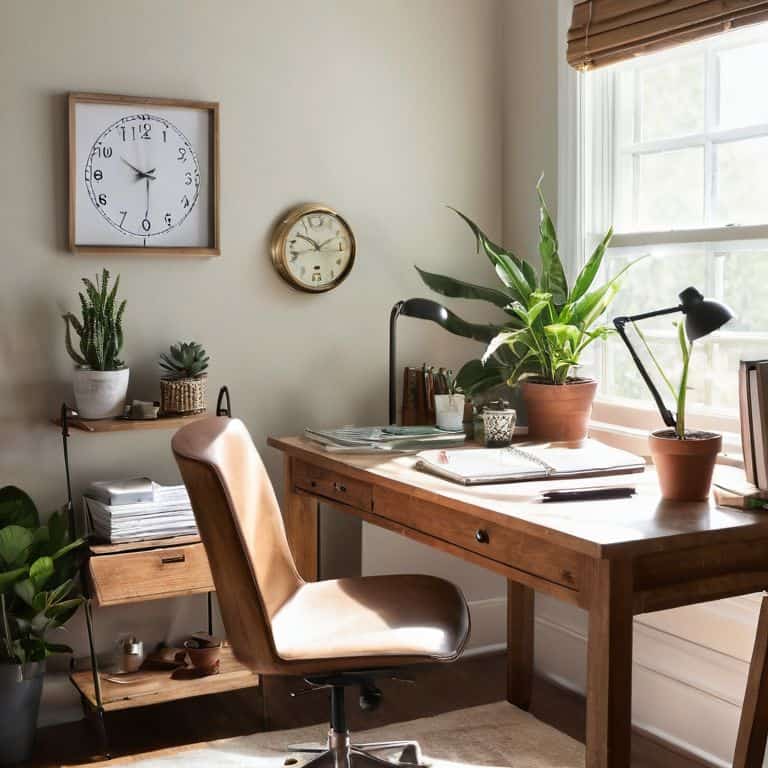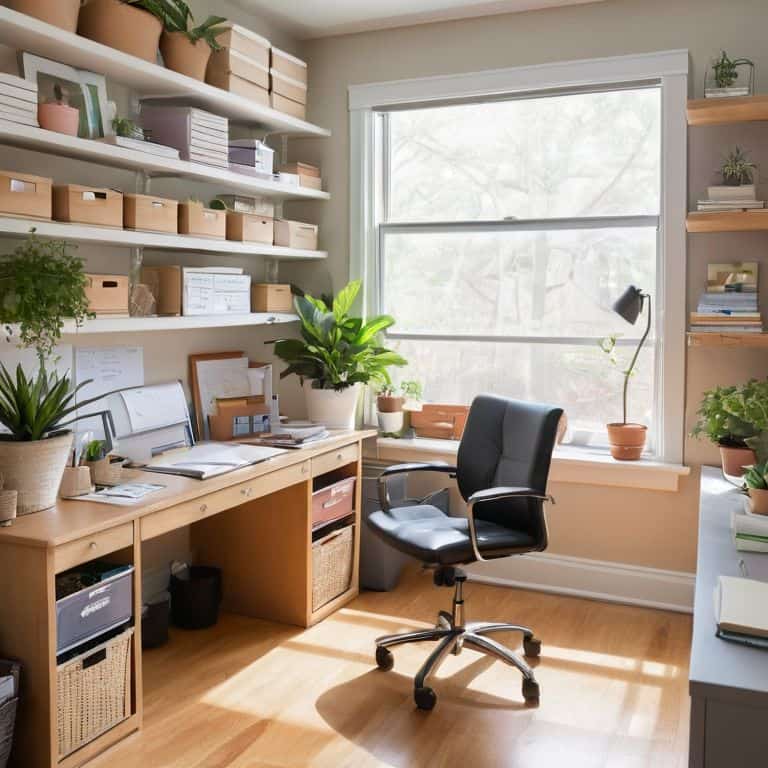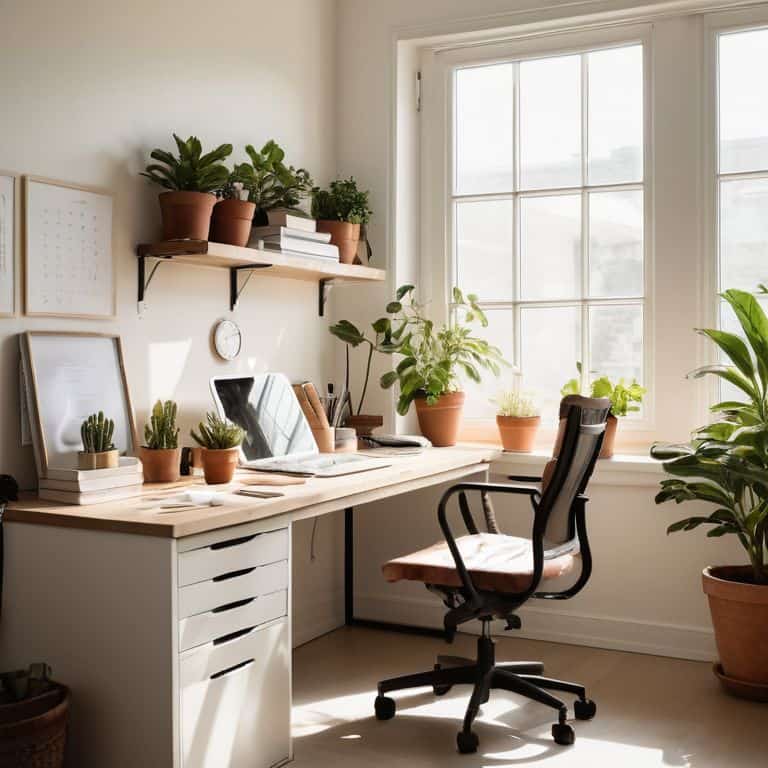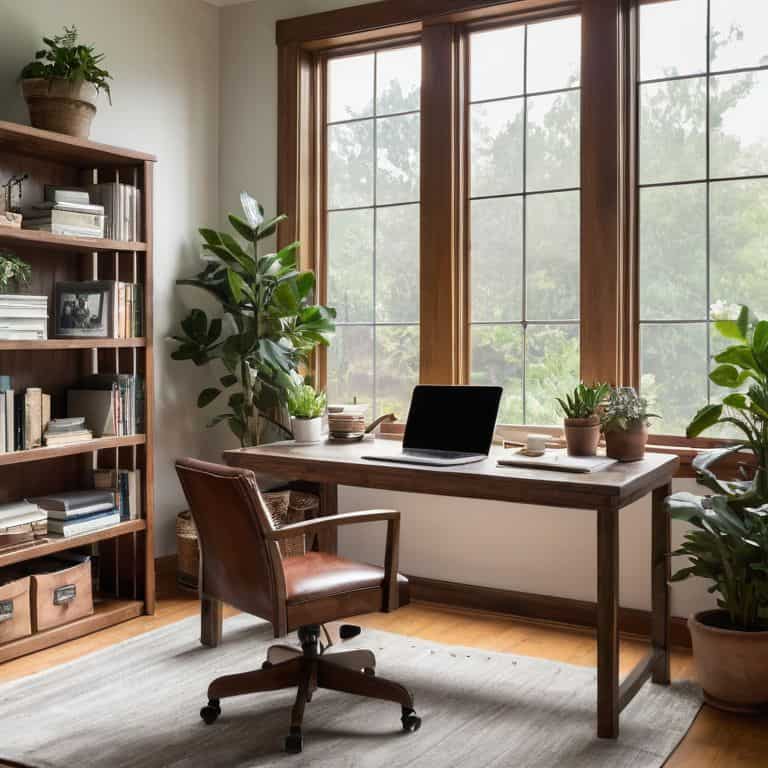I still remember the day I realized that the link between organization and productivity wasn’t just about cleaning up my desk, but about clearing my mind. As a former corporate HR professional, I’d seen countless colleagues struggle with cluttered workspaces and, subsequently, cluttered minds. It was as if the chaos around them had seeped into their thoughts, making it impossible to focus. I’ve found that when my space is cluttered, my mind feels chaotic – that’s why I’m convinced that getting organized is the key to unlocking a more productive, peaceful you.
In this article, I promise to share my no-nonsense approach to understanding the link between organization and productivity. I’ll cut through the clutter (pun intended) and provide you with practical, experience-based advice on how to create a space that fosters clarity and calmness. My goal is to help you create a home that’s a true sanctuary, where you can escape the chaos of the outside world and find serenity. I’ll draw from my own experiences as a professional organizer and author to offer you a unique perspective on the psychological principles that govern our relationship with our surroundings. By the end of this article, you’ll have a clear understanding of how to harness the power of organization to boost your productivity and find peace in your daily life.
Table of Contents
Unlocking Productive Harmony

As I work with clients to create a more organized home office, I’ve noticed a significant shift in their ability to focus. By implementing _time management techniques_ such as the Pomodoro method, individuals can work more efficiently and make the most of their time. This, in turn, allows them to prioritize tasks effectively, leading to reduced stress and increased productivity.
A well-designed workspace is also crucial for productivity. I often recommend a _minimalist workspace design_ that eliminates distractions and promotes a sense of calm. By removing clutter and creating a peaceful environment, individuals can focus on their work without feeling overwhelmed. This, combined with goal setting strategies, enables them to stay motivated and driven, even when faced with challenging tasks.
To maintain a healthy work-life balance, I advise clients to _create a schedule_ that allows for dedicated work and personal time. By prioritizing tasks and setting realistic goals, individuals can manage their time more effectively, leading to improved efficiency and reduced stress. By incorporating these strategies into their daily routine, individuals can unlock a more productive and peaceful life, where they can thrive in all areas.
Finding Flow With Organizational Systems
As I help clients create their ideal spaces, I’ve noticed that implementing simple systems can be a game-changer. By assigning a purpose and a place for each item, we can reduce mental clutter and make it easier to focus on the task at hand. This, in turn, allows individuals to tap into their creative potential and work more efficiently.
I encourage my clients to embrace the process of organizing as a therapeutic journey, rather than a chore. By doing so, they begin to appreciate the value of a well-structured environment and how it can positively impact their mental well-being.
Minimalist Workspace Design for Focus
To create a workspace that fosters focus, I recommend adopting a minimalist approach. This means stripping away distractions and clutter, allowing you to concentrate on the task at hand. By doing so, you’ll be able to direct your energy towards what’s truly important.
A well-designed workspace should have a calming atmosphere, one that promotes mental clarity and creativity. This can be achieved by incorporating natural elements, such as plants or a vase with fresh flowers, and selecting a color palette that is soothing to the eyes.
The Link Between Order and Output

As I work with clients to create organizational systems for home office spaces, I’ve noticed a profound impact on their ability to focus and manage their time effectively. By implementing simple, logical systems, individuals can reduce stress and increase their overall sense of calm, leading to greater productivity. This, in turn, allows them to prioritize tasks more efficiently, making the most of their time and energy.
One of the most effective ways to achieve this sense of calm and focus is through minimalist workspace design. By removing distractions and clutter, individuals can create an environment that promotes time management techniques for increased focus. This might involve setting aside specific times for checking email or taking breaks, allowing for a more balanced and productive work schedule. By doing so, individuals can better manage their workload and reduce feelings of overwhelm.
In my experience, creating a schedule that allows for work-life balance is crucial for maintaining productivity and reducing stress. This might involve setting clear boundaries between work and personal time, or implementing goal setting for improved efficiency strategies. By taking a step back to assess their priorities and create a plan, individuals can make the most of their time and energy, leading to a greater sense of accomplishment and fulfillment.
Goal Setting for Efficiency and Balance
As I work with clients to create their ideal spaces, I’ve seen how setting intentional goals can be a game-changer for efficiency and balance. By identifying what they want to achieve in their personal and professional lives, they can begin to design systems that support those objectives. This might involve creating a dedicated workspace or implementing a scheduling system that allows for focused work and relaxation time.
To maintain this balance, it’s essential to prioritize self-care alongside productivity. This means recognizing that rest and rejuvenation are just as important as work and achievement. By making time for activities that nourish both body and mind, my clients can maintain their energy and motivation, ultimately leading to greater efficiency and a sense of calm in their daily lives.
Prioritization Strategies for Reduced Stress
As I work with clients to create their ideal spaces, I’ve seen how effective prioritization can make all the difference in reducing stress. By focusing on the tasks and items that truly matter, individuals can begin to feel a sense of control and calm in their environment. This, in turn, allows them to approach their work and personal life with a clearer mind.
To achieve this sense of clarity, I recommend implementing a simple categorization system. This involves grouping tasks and items into categories of importance and urgency, allowing individuals to quickly identify and tackle the most critical tasks first. By doing so, they can break free from the weight of cluttered to-do lists and focus on making meaningful progress.
5 Essential Tips to Harmonize Your Space and Mind
- I interview each item in my home to determine if it sparks joy or serves a purpose, and I encourage you to do the same to maintain a clutter-free environment
- Implementing a ‘home for everything’ system has been a game-changer for my productivity, as it saves time and reduces stress in the long run
- Creating a morning routine that includes a short organizational task, like making your bed or tidying up your workspace, can set a positive tone for the rest of the day
- Designating a specific area for tasks like bill paying or meal planning can help create a sense of control and efficiency, leading to increased productivity
- Practicing mindfulness while organizing, such as focusing on the sensation of handling each item or the sound of ambient music, can make the process feel therapeutic and enjoyable
Embracing Order for a Clearer Mind: Key Takeaways
I’ve found that implementing simple, logical organizational systems can significantly reduce mental clutter and increase productivity, allowing for a more serene and focused living and working space
By embracing minimalist design principles and prioritizing purpose and place for every object, individuals can create an environment that fosters flow, reduces stress, and promotes efficient goal achievement
Ultimately, recognizing the profound link between organization and mental clarity can be a powerful catalyst for transformation, enabling individuals to cultivate a sanctuary that nurtures both body and mind, and unlocks a more peaceful, productive version of themselves
Embracing the Harmony of Space and Mind
As we bring order to our surroundings, we simultaneously untangle the threads of our thoughts, revealing a clearer path to our goals and a more profound sense of inner peace.
Nathan Reed
Embracing the Harmony of Organization and Productivity

As we’ve explored the link between organization and productivity, it’s clear that creating a serene and orderly space is not just about aesthetics, but about unlocking a clearer mind. By implementing organizational systems, embracing minimalist design, prioritizing tasks, and setting achievable goals, we can significantly reduce stress and increase our output. The key takeaway is that organization is not a chore, but a tool for cultivating a more focused, efficient, and balanced life.
So, as you embark on your own journey to harmonize your space and productivity, remember that it’s a process of self-discovery and growth. By embracing the principles of organization, you’re not just tidying up your surroundings, you’re investing in your mental well-being. Take the first step today, and watch how the ripple effects of a more organized life can lead to a more peaceful, productive, and fulfilling tomorrow.
Frequently Asked Questions
How can I apply organizational principles to my digital life to improve productivity?
I recommend applying the same “purpose or place” principle to your digital life, streamlining your computer files and phone apps to reduce digital clutter, and implementing a simple, consistent system for managing emails and notifications, allowing you to focus on what truly matters.
What role does emotional attachment to clutter play in hindering productivity, and how can I address it?
Emotional attachment to clutter can significantly hinder productivity. I help clients “interview” their belongings, exploring the stories behind each item to decide what truly brings joy or serves a purpose, and what can be let go of, freeing both physical and mental space.
Can implementing organizational systems in my personal space really have a significant impact on my mental clarity and overall well-being?
I’ve seen it time and again: a cluttered space equals a cluttered mind. By implementing simple, logical systems, you can create a sense of calm and clarity, allowing your mind to focus on what truly matters. It’s not just about tidying up; it’s about crafting a sanctuary that nurtures your well-being and sparks your productivity.
